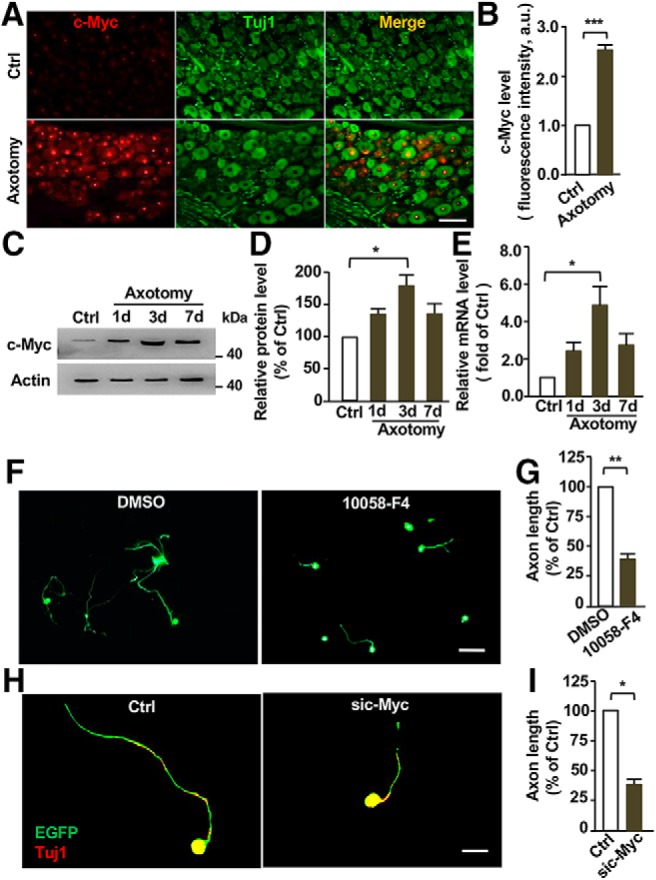Figure 1.

c-Myc is upregulated in adult sensory neurons upon peripheral nerve injury and functionally required for sensory axon regeneration in vitro. A, Representative immunostaining of DRG sections showing nucleus localization of c-Myc in dorsal root ganglion (DRG) neurons and upregulation of c-Myc levels after sciatic nerve axotomy. Scale bar, 50 μm. B, Quantification of nucleus fluorescence intensity of c-Myc (n = 3 independent experiments; p = 0.0001). C, Representative Western blot images showing significantly increased levels of c-Myc in adult DRG neurons in vivo 3 d after sciatic nerve axotomy. D, Quantification of Western blot results from three independent experiments. p = 0.021. E, qPCR results showing significantly increased mRNA levels of c-Myc in adult DRG neurons in vivo 3 d after sciatic nerve axotomy (n = 3 independent experiments; p = 0.029). F, Representative images showing that inhibition of c-Myc in cultured DRG neurons with the pharmacological agent, 10058-F4, for 3 d dramatically reduced DRG axon growth. Scale bar, 200 μm. G, Quantification of average axon lengths of control neurons treated with DMSO and neurons treated with the c-Myc inhibitor from three independent experiments. p = 0.0083. H, Representative images showing that knocking down c-Myc with a specific siRNA in cultured DRG neurons dramatically reduced axon growth after 3 d in culture. Scale bar, 50 μm. I, Quantification of average axon lengths of control neurons expressing a scrambled siRNA and neurons expressing sic-Myc from three independent experiments. p = 0.018. Data are represented as mean ± SEM. *p < 0.05, **p < 0.01, ***p < 0.001.
